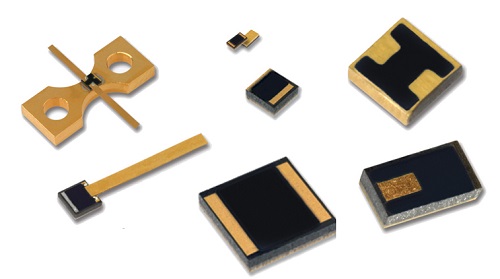What are High Frequency ( RF ) Resistors?

The most common lumped elements in electronics circuits are resistors, capacitors, and inductors. The resistance property of resistors limits the free flow of current through the circuit. At high frequency, resistors are frequency-dependent elements that showcase different behavior at different frequencies. The need for resistors with both high frequency performance and high power handling capability is growing. In most cases, the smaller the resistor, the better performance at high frequencies.
High frequency/RF resistors are specialized resistors designed to work effectively in high-frequency and radio frequency (RF) applications. These resistors are engineered to have specific characteristics that make them suitable for use in circuits where the frequency of the signals is relatively high.
Here are some key features and considerations regarding high frequency/RF resistors:
-
Construction: High frequency/RF resistors are typically constructed using materials and techniques that minimize parasitic elements, such as inductance and capacitance, which can adversely affect the performance of the resistor at high frequencies. They are usually made using thin-film or thick-film technology to achieve precise resistance values and high-frequency characteristics.
-
Resistance Values: High frequency/RF resistors are available in a wide range of resistance values, typically from a few ohms to several kilohms. These resistors have tight tolerances, ensuring that the actual resistance closely matches the specified value. Common tolerance values include 1%, 0.1%, and even tighter tolerances for more precise applications.
-
Power Handling: The power handling capability of high frequency/RF resistors is an important consideration. Since high-frequency signals can generate significant power, these resistors are designed to dissipate the heat generated efficiently. They are often made using materials with high power handling capabilities or with larger surface areas to enhance heat dissipation.
-
Frequency Response: High frequency/RF resistors are designed to maintain their specified resistance value across a broad frequency range. They have low parasitic capacitance and inductance, which helps minimize any deviation in performance as the frequency increases. This ensures accurate signal transmission and minimal signal distortion in RF circuits.
-
Temperature Coefficient: The temperature coefficient of resistance (TCR) is an important parameter for resistors, including high frequency/RF resistors. It indicates how the resistance value changes with temperature. High frequency/RF resistors are designed to have low TCR values, allowing them to maintain stable resistance over a wide temperature range.
-
Packaging: High frequency/RF resistors are available in various package types, such as surface-mount (SMD) and through-hole packages. Surface-mount resistors are commonly used in modern electronics due to their compact size, compatibility with automated assembly processes, and suitability for high-density circuit boards.
-
Applications: High frequency/RF resistors find applications in numerous fields, including telecommunications, wireless communication systems, radar systems, satellite communication, high-frequency test equipment, RF amplifiers, and microwave circuits. They are often used as terminations, attenuators, matching elements, or impedance-matching components in RF circuits.
High Frequency or RF Resistors are resistors specifically designed to handle signals with high frequency content. This type of components usually have power ratings and tolerances that are much higher, and are therefore able to handle higher currents and voltages, as well as higher frequencies. The most known type of RF Resistor is the Chip resistor, which is an extremely small, lightweight component that can be used for applications with high frequency content. The most common types are the Wire-Wound, Metal-Film, and Thick-Film. These resistors are used in circuits that require extremely high frequency content, like Radio, Telecommunications, and High Speed Circuits.